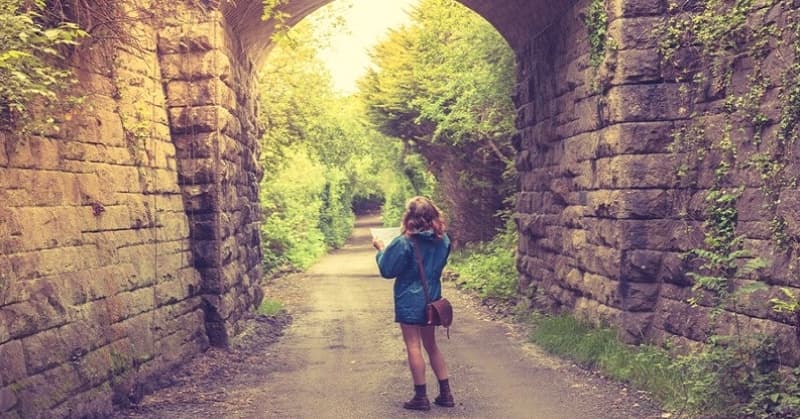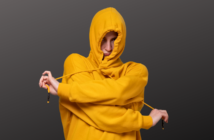To be lost is as legitimate a part of your process as being found. – Alex Ebert
If you feel a little lost right now, you’re not alone.
Many people experience this at some point in their lives.
The way out is to find yourself.
Only you can do this. You cannot wait for someone else to find you and tell you who you are.
Where do you begin looking?
That’s what we’ll hope to answer in this article.
Speak to an accredited and experienced therapist to help you find your true identity. You may want to try speaking to one via BetterHelp.com for quality care at its most convenient.
What Does It Feel Like To Be Lost?
If any of the following sounds familiar to you, it’s a sign that you feel lost right now.
- You don’t have a strong sense of identity.
- You don’t know your place in the world.
- You struggle to envision a future that looks any different to your present.
- You feel discontent with parts of your life.
- You feel like there’s more to life than you’re currently engaged with.
- You feel a certain distance between you and the people in your life.
- You no longer feel comfortable with the person you are.
Why Might You Be Struggling With Your Identity?
Identity is not something that people feel the moment they are able to recognize themselves in the mirror.
It is something you discover piece by piece as you journey through life.
Yet, it can be easy to confuse what is actually you and what you think is you.
For one, you are not an isolated being. You are part of an elaborate interwoven system of people, groups, beliefs, ideals, and other entities.
This society that you grew up in can put ideas in your head about the type of person you ought to be.
Or perhaps you have been weighed down by the expectations of your parents, or of other important people in your life.
They may have their own ideas of who you should be, what you should value, and where your path should lead in life.
And identity is not a fixed thing. It is constantly changing and being molded by your experiences.
Sometimes this process is slow and gradual. Other times certain events can shift things dramatically.
If you have recently gone through something that has made you question how you are living your life, it can leave you feeling at odds with the person you currently see when you look in the mirror.
And as you move through the different stages of life, you might feel the need to renew your identity so that it better reflects where you are and who you want to be at this point in time.
This is where the classic mid-life crisis comes into play, and the somewhat new quarter-life crisis that many young adults seem to have these days.
What Are You Looking For?
In this process, it can help to identify whether you want to:
a) find your true self for the first time
b) find your new self
c) find yourself again
If you feel as though you have never really known who you truly are, it comes down to forming an identity from scratch.
This requires the most soul searching and work to really hone in on your unique combination of traits, beliefs, and desires.
Have you gone through a shift in your mindset or worldview – perhaps due to a single event or because you’ve reached a new stage of your life?
If so, the process is different. It involves deciding which things you’d like to change about your life. What do you want to drop from your life and what do you want to add to it?
Or do you feel like you have lost touch with who you are? Did you once have a good understanding of what really mattered to you?
If this is the case, the goal is to identify the ways that you may have drifted from the person you are so that you can find your way back to that point.
While the advice that follows is applicable to all of these situations, the way that you choose to prioritize the steps may differ depending on your circumstances.
What Does It Mean To Find Yourself?
The very idea of finding yourself is quite abstract.
What does it actually mean?
Well, a good way to define it is to look back at the bullet points above that describe what it feels like to be lost.
The process of finding yourself is one that should hopefully reverse each of those statements.
So you should end up with a strong sense of identity, know your place in the world, be able to imagine a different future, and feel content with your life in general.
You should feel engaged with life, as though you are choosing your path rather than letting it choose you.
You should feel connected with the people in your life. Perhaps even with the wider community.
You should feel comfortable with the person that you are and the ways you think and act and treat others.
Essentially, it means to reach a point where you are able to move through life with confidence….
…where you can stop doubting yourself at every turn.
…where you are guided by your intuition.
…where you embrace who you are rather than trying to deny it.
Does that sound like something you’d want?
11 Steps To Finding Yourself
It is a good idea to seek professional help from one of the therapists at BetterHelp.com as professional therapy can be highly effective in helping you to discover your true self.
Let’s now jump into some of the ways that you can discover your true identity.
Many of the points below require effort on your part. You will need to remain committed to the process if you are to succeed.
And whilst some steps are arguably more important than others, they all deserve at least some time and attention.
1. Identify Your Personality Type
Knowing who you are begins with understanding your personality.
We all have a unique personality, but it is possible to categorize the various things that make up who we are.
The theory and practice of personality science is fairly well established, and there are many different ways to assess and categorize your personality type.
Three of the most popular are the Big Five personality traits, the Myers-Briggs Type Indicator®, and the Enneagram Type Indicator.
Without going into detail here, these models of personality aim to help you identify how you think, act, and interact with the world.
They cover a range of different traits and it is useful to work out where you fall into each of these three models.
To do this, we recommend taking these tests:
- The Riso-Hudson Enneagram Type Indicator – currently $12
- The Myers-Briggs Type Indicator Assessment – currently $49.95 (or take this free assessment with the option to upgrade to a full report for $29)
- The Big Five personality traits assessment – free basic report with the option to upgrade for $29
Taking these tests will open up a huge window into the type of person you are.
2. Observe Your Feelings
As we negotiate each day, we are faced with a variety of situations.
Identifying how you react emotionally to these experiences can teach you more about what you do and do not like as a person.
And it can help you to spot aspects of your life that might need some adjustment.
Say, for example, that you are tasked with finding a restaurant for you and your friends to visit.
Only, you simply hate the whole process. You spend hours reading through reviews to ensure you make the right choice.
What’s beneath that need to find the ideal place to eat?
Is it that you fear your friends will criticize you if the food is bad?
Will you feel like a failure if you don’t get it right?
Are you concerned with pleasing every single one of your friends instead of picking something that pleases the majority?
This single, tiny experience can tell you a lot about yourself in a wider context.
Maybe you seek to avoid taking responsibility for things and prefer to be a follower rather than a leader.
Maybe you are a perfectionist.
Maybe you get anxious when making decisions.
For every situation you face, try to identify any feelings you might have and ask what the root causes are of those feelings.
And this applies to positive feelings too.
If you can figure out what you like doing and what you don’t like doing, it can give you a better idea of your strengths and weaknesses.
You can use this knowledge to work on your weaknesses and maximize your strengths.
3. Ask Who You Can Relate To And Who You Look Up To
It’s often easier to see yourself in someone else before you realize that that’s who you are too.
These can be real people, but it is just as common to identify with a fictional character from a book, movie, or TV series.
If you just seem to ‘get’ this person on an intuitive level, they can offer a glimpse into your own true identity.
The same can be said of those people you look up to as role models or figures of inspiration.
They can show you the types of traits and behaviors that you would like to embody, or possibly already do embody.
If it’s a real person rather than a work of fiction, it might be worth seeing if there are any documentaries or interviews that you could watch, or whether they have ever written an autobiography you could read.
You may be able to identify with their experiences and relate to the ways they dealt with them.
This can help you to get closer to the person and, in the process, closer to your true self.
4. Ask Others What They Think About You
While the people we spend our lives with can’t ever know everything we think or feel, they can often see things that may not be instantly apparent to us.
So it can be worth asking those who are close to you and who you trust what they think of when they think of you.
They may be able to identify aspects of your personality that have eluded you and they may know the types of things that make you happy or stressed.
Oftentimes, finding yourself is as much about uncovering what is already there as it is about learning what you want to be there.
And asking trusted companions is a good way to discover who you are in the here and now.
5. Consider What Your Core Values Are
A big part of finding yourself is to figure out those things that really, truly matter most of all to you.
These basic values are what will dictate your thoughts and actions about almost everything else.
Perhaps fairness, integrity, and dependability are three things that are important to you.
Or do you hold tolerance, curiosity, and security above all else?
Try browsing this list of 500 values and jotting down a small handful (no more than 10) that really resonate with you.
Use these as guides in the wider process of finding out who you are.
6. Reflect On Your Past
Your life up until now contains many lessons about who you are as a person.
Something as simple as recalling what you most enjoyed doing as a child can give you insights into the type of person you are now, underneath it all.
Did you enjoy playing a musical instrument; one that you no longer play? What was it that you liked about it?
Was it the learning process and mastering the technique?
Was it the creativity involved in improvising a tune?
Did it help you to forget your troubles and lose yourself in the moment?
Another approach you can take is to look at those things you are most proud of in your life so far.
And then, once again, ask yourself what was it about that achievement that made you so proud?
One final way that your past can shine a spotlight on the person you are (or wish to be) is by analyzing your regrets.
What have you done that you really wish you hadn’t? What can this teach you about your core values? How would you act if faced with a similar situation today?
This step is particularly useful for those who are looking to find themselves again after losing touch with what matters.
7. Look To The Future
Part of knowing who you are is having a clear vision of how you’d like your future to look.
Daydreaming about a more peaceful and relaxing future or longing for a life travelling the world reveals what your priorities are going forward.
This, in turn, says something about the person you are now.
So ask yourself what you’d like to be doing as you move into the next stage of your life.
What are the underlying reasons that you wish for these things? How does this translate into your current beliefs, values, and behaviors?
This step is especially useful for people who want to discover their new self after going through a period of change or a sudden life-altering experience.
8. Try New Things
Perhaps you feel a little lost because you have yet to identify something that really fills you with joy and passion.
If this is the case, the answer is to try out new things and expose yourself to different types of experiences.
Sometimes, our true self is waiting for us beyond our comfort zones.
By doing things that you wouldn’t normally do, you have the opportunity to discover pastimes, dreams, and even ways of living that really speak to you.
Maybe you learn the thrill of white water rafting. You might find that a minimalist lifestyle resonates with you. Perhaps you realize that you want to start your own business.
Go to talks on things you know little about. Visit expos that you think might interest you. Mingle with art lovers at a gallery opening.
While the majority of things won’t really be for you, there will be some that have the potential to be a big presence in your life going forward.
These things will form a part of the identity you are trying so hard to uncover.
9. Write Everything Down
The process of figuring out who you are is a long one. So it really helps to keep track of everything you have done and discovered so far.
You can either write in a daily journal if this appeals to you, or you could create a dedicated self-discovery document to house all of your thoughts and feelings related to finding yourself.
You could choose to list out things such as your likes/dislikes, values, goals, things that are important to you, etc.
Or you may like to make it more visual with a mind-map style diagram of all the important elements that make up the person behind the name and face.
However you choose to record things, refer back to it regularly to remind yourself of what you have discovered.
10. Meditate
Sitting quietly as you embrace the present moment can be a wonderfully relaxing experience.
But meditation is also a tool for self-discovery.
While you may wish to clear your mind of all thoughts, meditation is actually a time when thoughts will naturally pop into your head.
These thoughts can be quite random at times, or they may be about the things going on in your life.
One thing they have in common is honesty. They are a truer reflection of your inner self than the thoughts you might have at other times.
This is because you are not actively trying to think of things. They are simply entering your mind from your unconscious.
Your rational mind might think one thing about a person or event, but a more uncomfortable feeling might arise during a meditation that reveals something altogether different.
Let’s say that your friend said something hurtful the last time you met up. Your rational mind gave her the benefit of the doubt because she was also hurting at the time.
But during a meditation, you realize that you actually feel the comment was intentional and designed to wound.
You can then consider this in more depth after you finish meditating.
11. Accept What You Find Without Judgment
On a journey of self-discovery, you might come across things that are initially surprising.
You may find something that goes against who you thought you were and what you thought you stood for.
Whatever the case, don’t judge what you find.
You are merely uncovering the true nature of your unique self and even if it’s not what you expected, it’s still you.
What’s more, don’t allow the judgments or expectations of other people to influence what you accept as part of yourself.
It may be hard to feel like you are disappointing someone, but the real issue lies with them and not you if they are unable to accept you as you now are.
If you really have found yourself, it will soon feel as natural as breathing in and out.
If you haven’t found yourself, you’ll also know soon enough and can return to your search.
When You Have Found Yourself, Live As Yourself
Finding out who you are is only helpful if you then live by the morals, values, and beliefs of that person.
After all, you are not merely what you think and feel on the inside; you are what you say and do on the outside.
When you have gone through a process of finding yourself, don’t think that that is the end.
Don’t fool yourself into believing that you’ve reached your destination.
Your journey has only just begun.
The true reason to find yourself is to be yourself.
Otherwise, it’s just a waste of your time and energy.
And many of the strategies above are things you can continue to do on a regular basis to refine what it means to be you.
Remember, to find yourself is to be able to move through life with confidence in who you are and what you stand for.
If, at any time, you no longer feel this way, simply return to what you’ve written down and remind yourself of all the lessons you learned along the way.
And then redouble your efforts to live by those lessons.
Still not sure how to figure out who you are? Talking to someone can really help you to address and fix this issue. It’s a great way to get your thoughts and your worries out of your head so you can work through them.
A therapist is often the best person you can talk to. Why? Because they are trained to help people in situations like yours. They can guide you and help you to unconver the truest and most authentic aspects of yourself – the REAL you.
BetterHelp.com is a website where you can connect with a therapist via phone, video, or instant message.
While you may try to work through this yourself, it may be a bigger issue than self-help can address. And if it is affecting your mental well-being, relationships, or life in general, it is a significant thing that needs to be resolved.
Too many people try to muddle through and do their best to overcome issues that they never really get to grips with. If it’s at all possible in your circumstances, therapy is 100% the best way forward.
Online therapy is actually a good option for many people. It’s more convenient than in-person therapy and is more affordable in a lot of cases. And you get access to the same level of qualified and experienced professional.
Here’s that link again if you’d like to learn more about the service BetterHelp.com provide and the process of getting started.
You’ve already taken the first step just by searching for and reading this article. The worst thing you can do right now is nothing. The best thing is to speak to a therapist. The next best thing is to implement everything you’ve learned in this article by yourself. The choice is yours.
You may also like:
- How To Get To Know Yourself Better In 7 Questions
- Who Am I? The Profound Buddhist Answer To This Most Personal Of Questions
- 15 Quotes To Remember When You’re Feeling Lost In Life
- What Is Self-Reflection And Why Is It So Important?
- What Is Self-Concept And How Does It Influence Your Life?
- 101 Personal Mottos To Live By (And How To Choose One)











